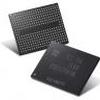The land of DRAM and NAND are highly volatile, however, for NAND there's currently a ton of developments as well as overproduction. And that means good news for NAND flash storage if you are a consumer. New reports indicate that by 2019 NAND could hit prices as low as 8 cents per GB, and that brings is at HDD price levels.
At last week’s Flash Memory Summit is was confirmed that the market is in an over-supply situation, the result would be a downward pricing correction, 64-layer 3D NAND at $0.08/GB in 2019. Reports the register. Add to that the development of QLC NAND (4bits/cell) and it is bound that SSD pricing will go down. Price correction will take several quarters. Also, keep in mind that these comments might be based on industry experts (IDC and DRAMeXchange data), but they're not a guarantee for this top happen.
SSDs Could Reach 0.8 cents per GB next year


